You’ve reached your limit!
To continue enjoying Utility Week Innovate, brought to you in association with Utility Week Live or gain unlimited Utility Week site access choose the option that applies to you below:
Register to access Utility Week Innovate
- Get the latest insight on frontline business challenges
- Receive specialist sector newsletters to keep you informed
- Access our Utility Week Innovate content for free
- Join us in bringing collaborative innovation to life at Utility Week Live

The machine uprising isn’t confined to hi-tech labs or the silver screen, it’s taking place in our pipes, water courses, wind turbines and street works. As such, Utility Week Innovate profiles five robotic innovations.
The rise of the machines is well underway. According to YouGov research, almost one-in-ten (7%) Brits believe that today’s robots have already developed higher intelligence levels than humans – with 44% believing they will surpass our intellect in the not-too-distant future.
YouGov also found that two-thirds (66%) of Brits would be happy for a robot or AI to administer some form of medical treatment – with a quarter claiming they’d trust AI in an urgent or intensive care scenario, while 37% would go under the robot-wielded knife in AI-assisted surgery.
Greater reliance on AI and robots is also on the utilities sector’s horizon as the drive for renewable energy and decarbonisation forces industry players to innovate in hostile offshore and underground settings, for example, and hastens machine intervention to maintain and measure the performance of hard-to-reach assets.
Ultimately, how can the sector harness the same autonomous and semi-autonomous technology already in train in other industries to meet tomorrow’s targets, and what collaborative innovation has already taken place?

- Supporting customers through this winter and identifying emerging vulnerabilities are among the key themes at the Utility Week Forum, which will take place in London on 8-9 November. Find out more here.
BladeBug – a world first turbine blade runner
 BladeBug is a six-legged cyber critter created to inspect and repair turbine blades – a task that currently requires human intervention in often hazardous offshore conditions.
BladeBug is a six-legged cyber critter created to inspect and repair turbine blades – a task that currently requires human intervention in often hazardous offshore conditions.
Over a three-day trial in 2021, it carried out the world’s first robotic “blade walk” controlled by a rope operator perched on an offshore wind turbine’s nacelle and using onboard cameras to perform checks along an 80m blade beyond the engineer’s line of sight.
By carrying out detailed analysis of blade damage and feeding back images and data, the bot can support proactive, informed decisions leading to comprehensive maintenance – thereby reducing downtime and increasing the generational power of an offshore array.
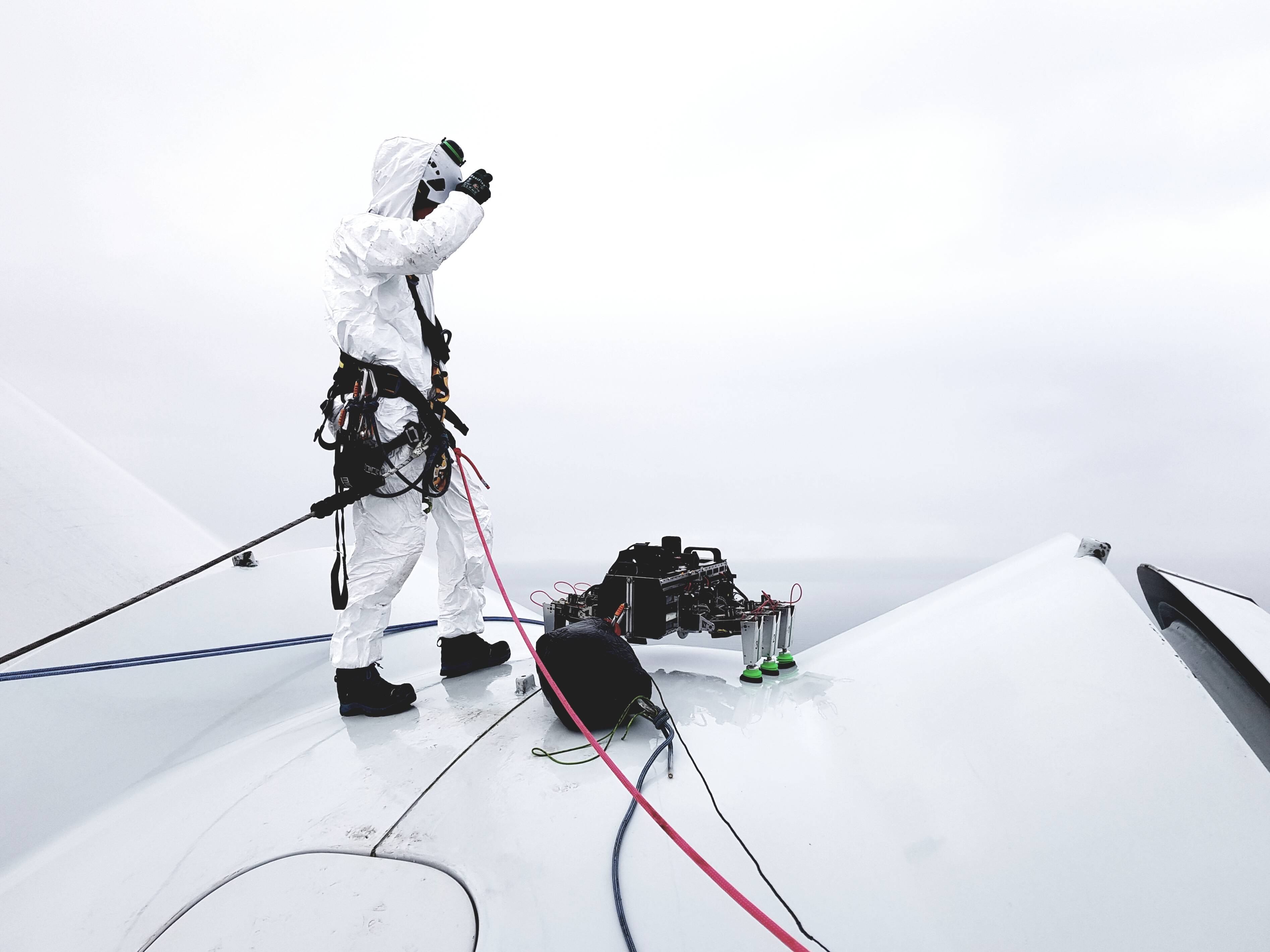 Additionally, while the BladeBug’s first crawl saw it carry out a fairly standard lightning protection systems check, its creators are now attempting to arm the bug with further tools so to treat defects before the need to deploy a traditional rope access team – a process that will hinge on future collaboration.
Additionally, while the BladeBug’s first crawl saw it carry out a fairly standard lightning protection systems check, its creators are now attempting to arm the bug with further tools so to treat defects before the need to deploy a traditional rope access team – a process that will hinge on future collaboration.
“From almost the very beginning, we have been working with the Offshore Renewable Energy (ORE) Catapult by taking full advantage of their testing facilities at the Port of Blyth and using their industry knowledge, which has been invaluable,” founder Chris Cieslak says. “And as with any solution, BladeBug is being continually adapted and improved to provide a huge array of capabilities for the ever-growing sector, and moving from semi-autonomous to full autonomy is certainly on its radar.”
One result of such collaboration is the EchoBoltBug. Funded by Innovate UK and built in tandem with GE Renewables and the ORE Catapult, the project combines BladeBug with EchoBolt’s ultrasonic technology to inspect wind turbine bolts and identify loss of tension. The robot has already successfully scaled the interior of the ORE Catapult Levenmouth Demonstration Turbine, an achievement which it’s believed could pave the way for completely autonomous maintenance.
The RRES – mapping and excavating underground assets
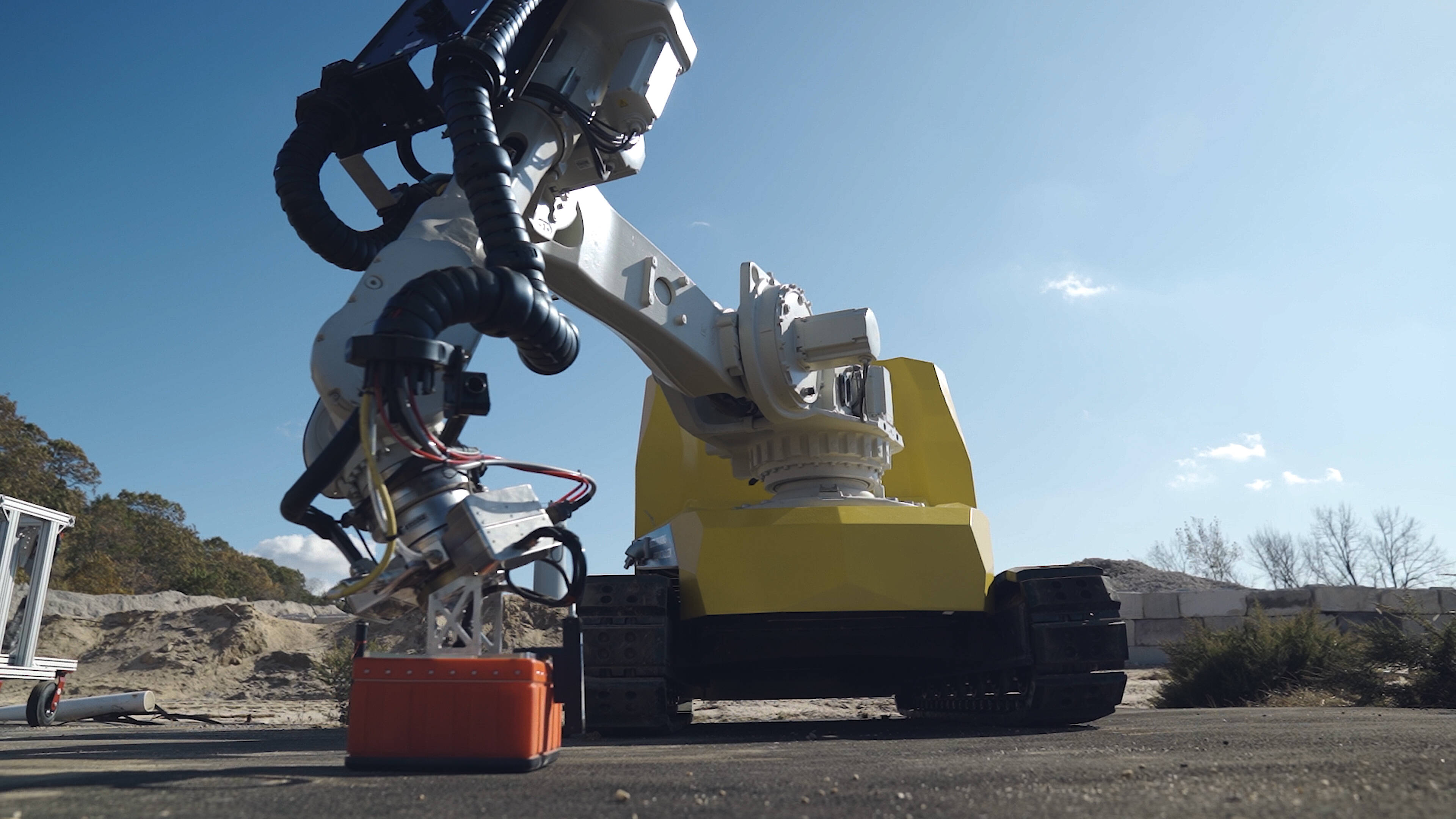 Gas distribution company SGN’s Robotic Roadworks and Excavation System (RRES) aims to automate the excavation of both transmission and distribution assets using artificial intelligence and advanced robotics to reduce dig size, labour costs, and equipment usage during routine maintenance.
Gas distribution company SGN’s Robotic Roadworks and Excavation System (RRES) aims to automate the excavation of both transmission and distribution assets using artificial intelligence and advanced robotics to reduce dig size, labour costs, and equipment usage during routine maintenance.
A Network Innovation Competition winner in 2018, the system combines advanced robotic arm technology, a mobile platform, and AI guided by a suite of sensors with feedback controls to enable safe and efficient excavation that cuts both physical and carbon footprints.

Before starting a dig, RRES uses sensors to build a detailed picture of the ground and assets beneath it. The robot then scans the area before a computer algorithm processes its findings, uses them to create a map, and generates a 3D model of underground assets.
Using AI to sense material hardness and adjust cutting speed, RRES’ robotic arm then cuts a keyhole before gaining access to the underground asset using supersonic air nozzles to disturb soil, which is then removed via vacuum suction.
LeakVision – ‘Predator-style’ heat-seeking vision
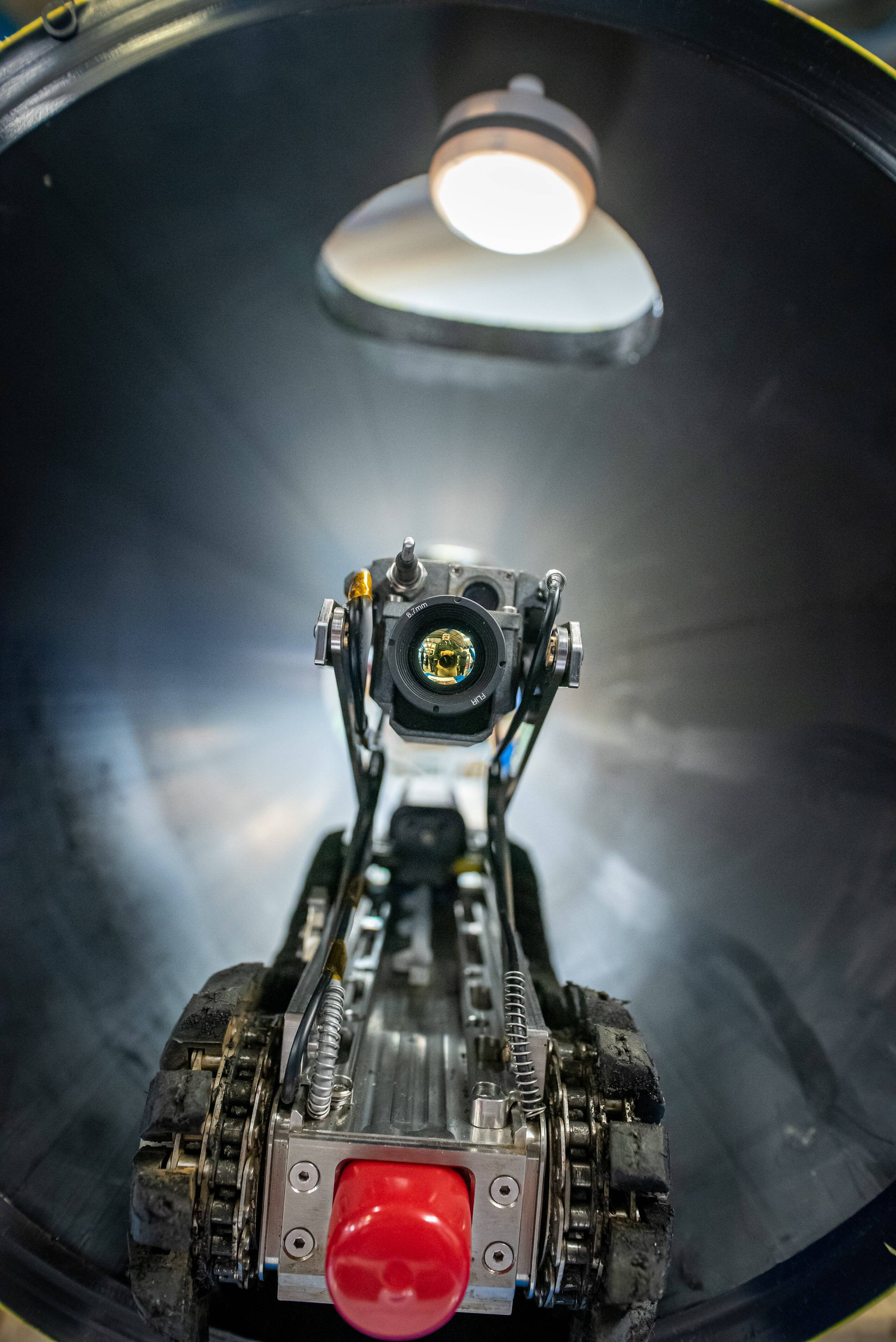 The gas network silently supplies UK homes via thousands of kilometres of underground pipes. However navigating this subterranean maze to locate and repair leaks has posed a complex challenge for the best part of a century – one historically met by physically demanding methods such as bar-holing and trench excavation.
The gas network silently supplies UK homes via thousands of kilometres of underground pipes. However navigating this subterranean maze to locate and repair leaks has posed a complex challenge for the best part of a century – one historically met by physically demanding methods such as bar-holing and trench excavation.
However, off the back of a £78,000 investment from Ofgem’s Strategic Innovation Fund, Northern Gas Networks and tech firm Synovate have embarked on a thermal imagery and robotics trial to assess the pressure condition of pipes, explore their internal features, and simulate change scenarios.
Its patented LeakVision technology is a robot mounted in-pipe detection sensor system used to visualise leakage and – like the infamous movie character – offer ‘Predator-style’ heat-seeking vision in real-time to identify a point of leakage.
The project team are also in the process of exploring how the technology can be applied to gauge pipeline suitability for hydrogen conversion, as well as reduce leakage points and risk when managing emergency response on a hydrogen network.
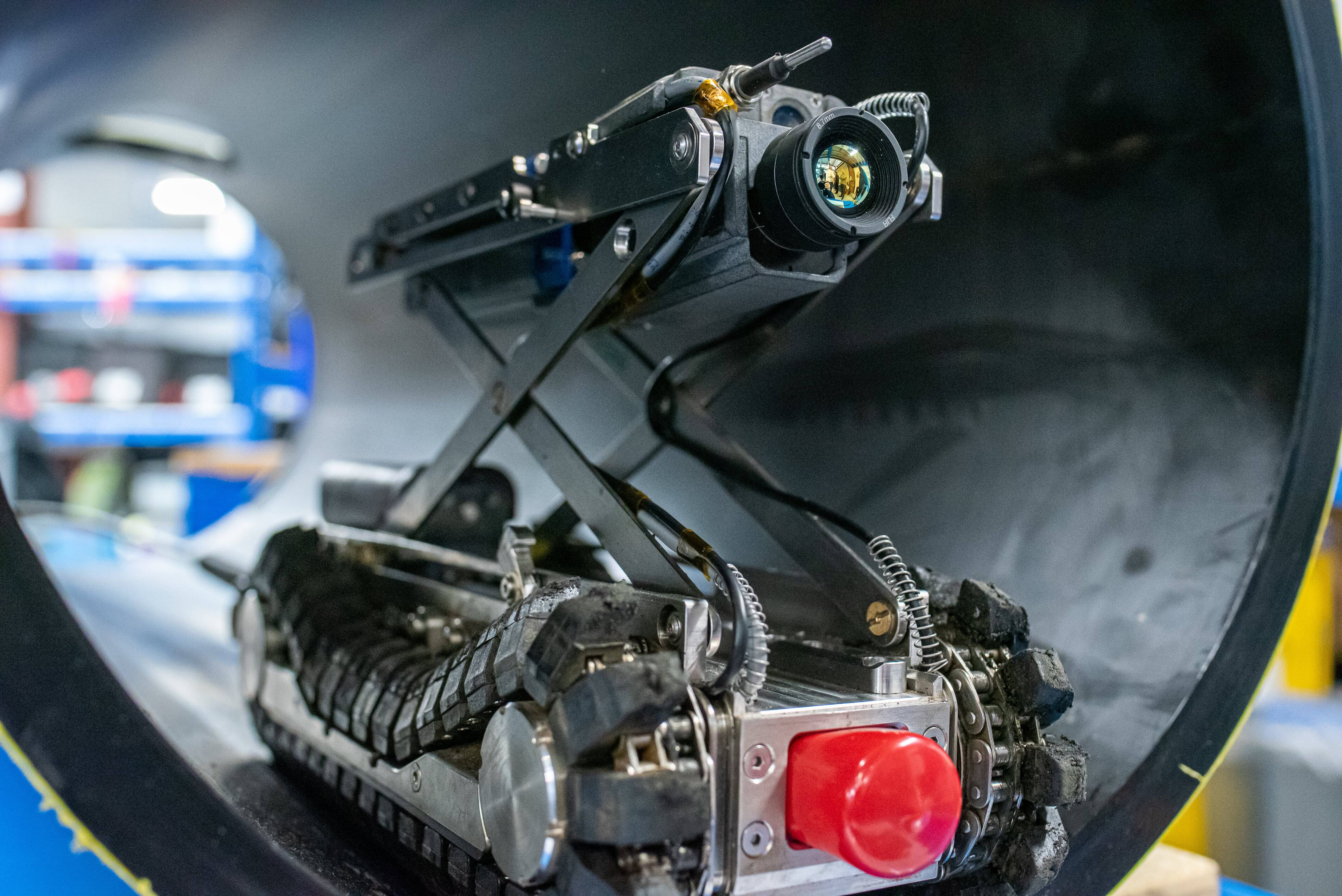
Aquabot – tracking water pollution in real time
The most recent data from event duration monitors supplied by water companies and published by the Environment Agency (EA) revealed 372,533 discharges from 14,470 combined sewer overflows in 2021. Additionally, with just 14% of English rivers meeting the criteria for “good” ecological status according to the EA, it’s clear that tracking and tackling the component parts of what the Environmental Audit Committee described as a “chemical cocktail” is essential.
 Consequently, in an attempt to provide greater and safer access to remote locations for environmental sample and data collection, Altitude Thinking has harnessed both aerial and submersible drones alongside a fleet of remote control and autonomous boats.
Consequently, in an attempt to provide greater and safer access to remote locations for environmental sample and data collection, Altitude Thinking has harnessed both aerial and submersible drones alongside a fleet of remote control and autonomous boats.
Arguably its flagship, the waterborne Aquabot is equipped with multiple sensors to measure water pollution levels in real time – gauging turbidity, conductivity, PH/ORP, temperature and dissolved oxygen levels.
The robot is deployed on large bodies of inland water with radio control distances up to 500m and an operating time of six hours. Its GPS-based autopilot adds autonomous capabilities up to 250m and travel to 500 different programmed points of interest.
Live data is transmitted from Aquabot to an on-shore “pilot” via a custom app featuring a Google Map display with the numerical data from the sensor plotted at the point where the data was captured. This plots potential points of pollution and allow management to take preventative action.
Hear more from Aquabot inventor, Dale Colley, here.

Pipebots – autonomous tech in pressurised sewage
Soon to join the Aquabot on pollution patrol are Pipebots – designed as part of a Thames Water-led project which received £230,930 funding from the Ofwat Water Breakthrough Challenge in March.
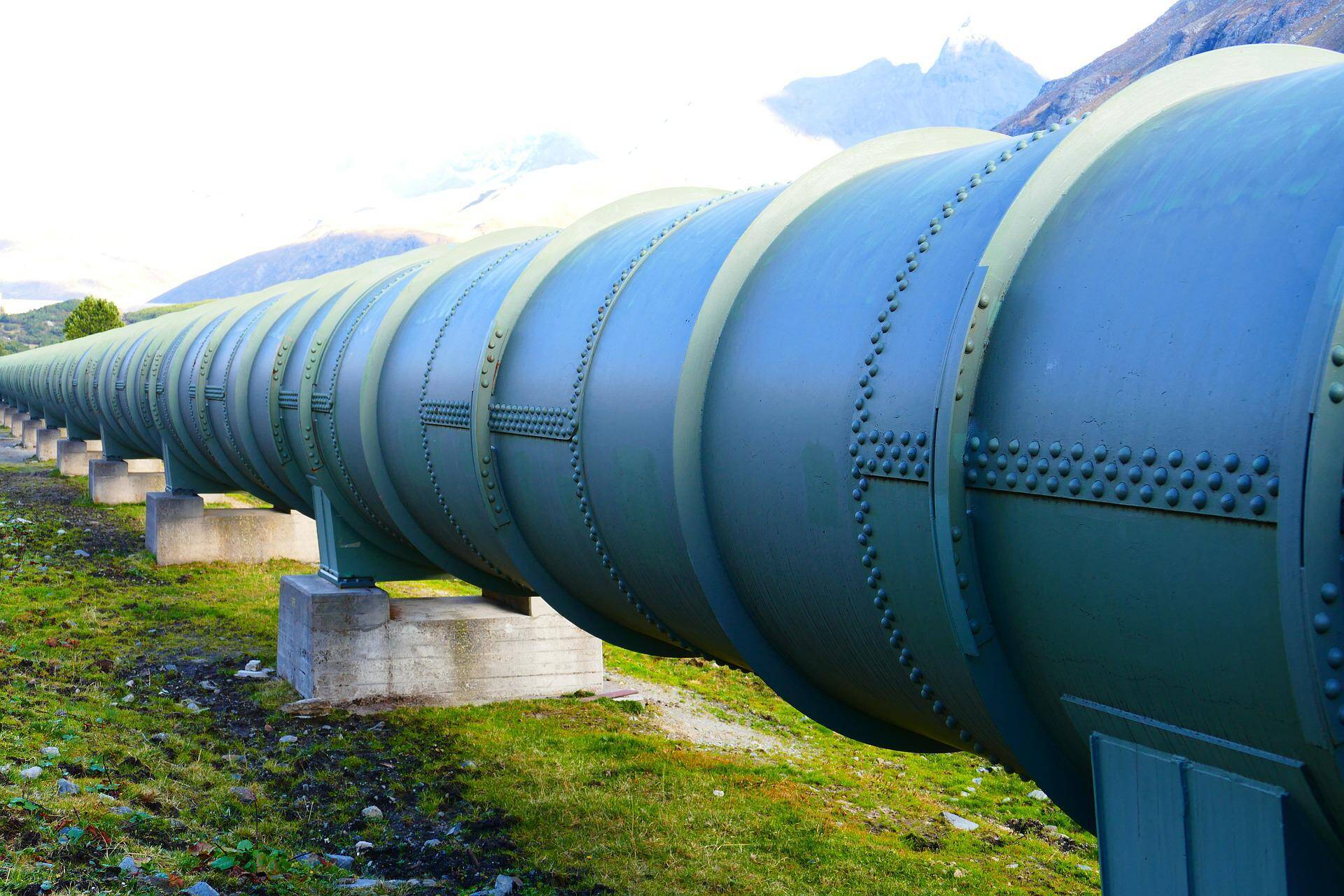 Rising mains are pipes which are pressurised so sewage can be pumped uphill for treatment. However, according to Thames, they are difficult to survey because they are hard to access, shut off and inspect internally. Consequently faults often only come to light when pipes burst.
Rising mains are pipes which are pressurised so sewage can be pumped uphill for treatment. However, according to Thames, they are difficult to survey because they are hard to access, shut off and inspect internally. Consequently faults often only come to light when pipes burst.
However, the Pipebot collaboration between Thames, Wessex Water, Dwr Cymru, the University of Sheffield and engineering firm Synthotech, seeks to monitor faults and reduce the risk of spills by using robots to assess the internal condition of these pipes and overhaul the way they’re managed.
While the water industry already uses human-controlled robots to assess partially filled sewer tunnels and sewers, Pipebots will pave the way for the autonomous technology to be used in fully pressurised sewer pipes, and ultimately help spot, predict and fix deteriorating pipes before they burst.
“Preventing bursts and pollutions to the environment is a top priority and robots are already used to assess the condition of some sewer pipes,” Rachel Cunningham, networks research and development manager at Thames Water explains.
“Testing this technology on pressurised sewage pipes will help the water industry protect and carry out maintenance work on its sewer networks for years to come.”
Utility Week Innovate, in collaboration with Utility Week Live aims to discover and promote innovative approaches to tackle front line business challenges through case studies, technical/project studies, networking, and live content. Be recognised as a key solution provider and meet your target audience face-to-face at UWL23. Find out more about exhibiting
Please login or Register to leave a comment.